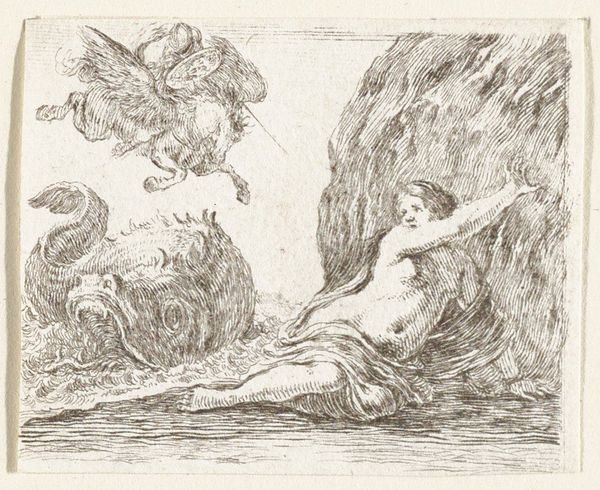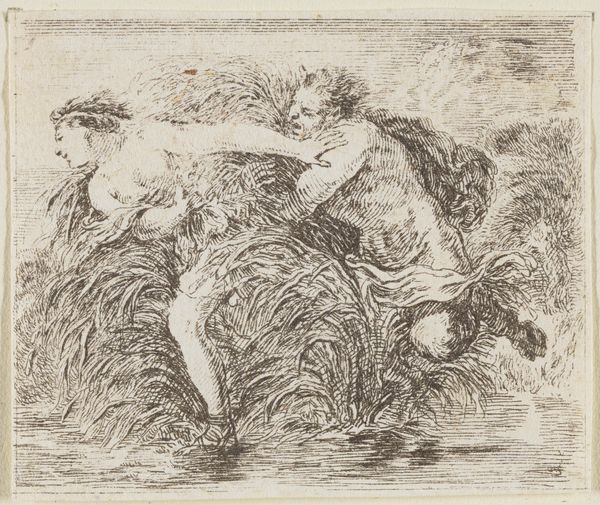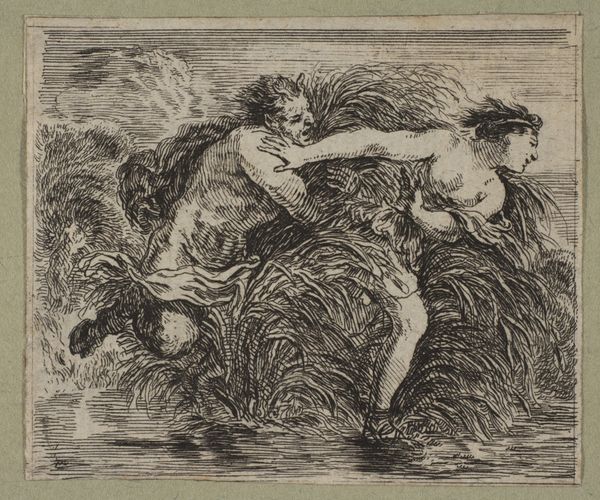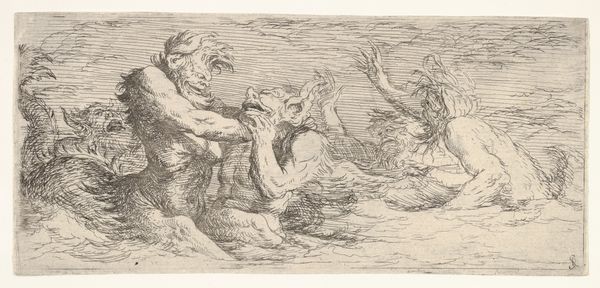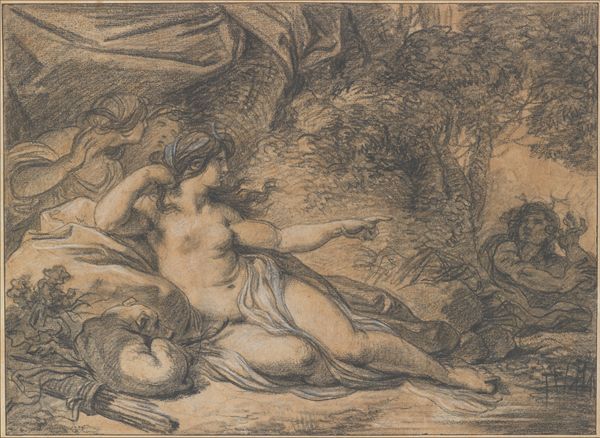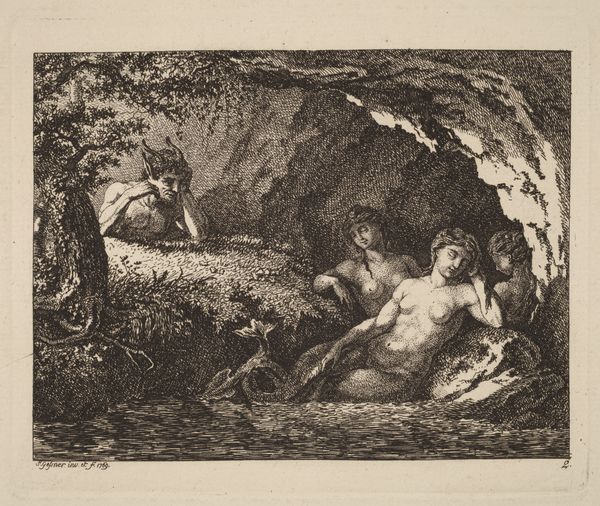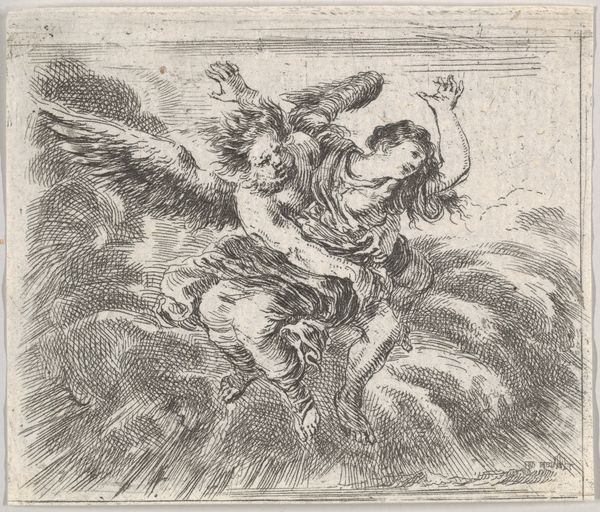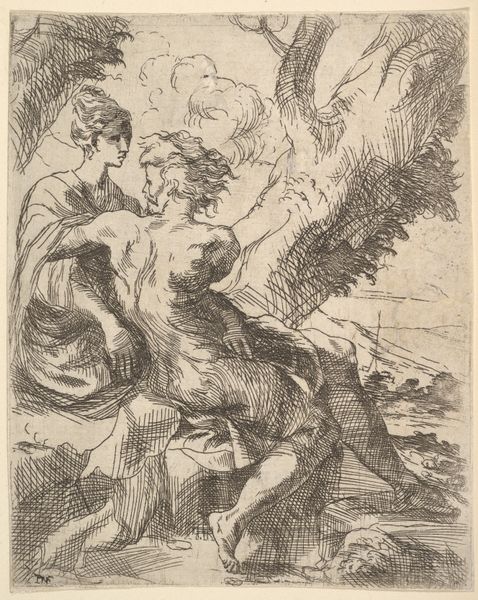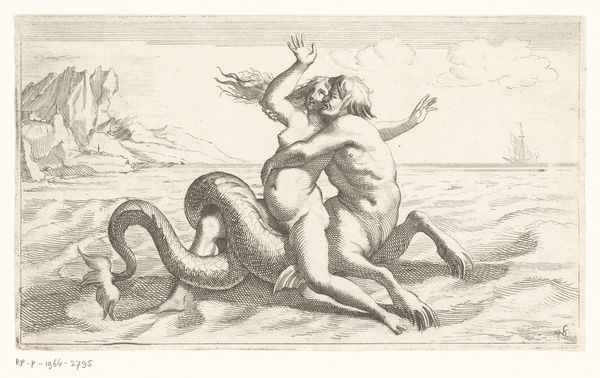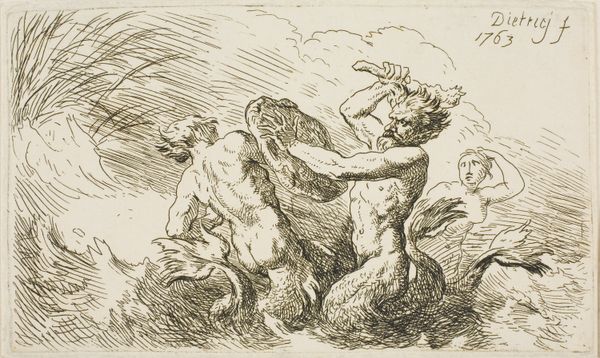
Perseus and Andromeda, from 'Game of Mythology' (Jeu de la Mythologie) 1644
0:00
0:00
drawing, print, etching, engraving
#
drawing
#
narrative-art
#
baroque
# print
#
etching
#
figuration
#
history-painting
#
engraving
Dimensions: Sheet: 1 7/8 x 2 3/16 in. (4.7 x 5.6 cm)
Copyright: Public Domain
Editor: Here we have Stefano della Bella's "Perseus and Andromeda," an etching and engraving from 1644, part of a series called 'Game of Mythology.' The contrast is stark. It feels almost frantic, with all the cross-hatching. What are your initial thoughts on this print? Curator: What interests me is how this print, intended as part of a game, implicates its viewers in the economy of mythological imagery. We're consuming and re-circulating this scene, like so many others. Consider the labor involved in both the creation and the reception of such an image. Editor: So you're focusing on how it was made and consumed? The practical side of art, almost? Curator: Exactly. Look at the sheer volume of similar prints circulating at the time. Each impression required skilled labor, materials like paper and ink, and a market for distribution. Who had access to these games? What kind of social circles did they reinforce? Editor: That's interesting. I was mainly looking at the story itself, the drama of Perseus saving Andromeda, but you're right, it's also a product. Do you think the fact that it was meant for a game diminishes its artistic value somehow? Curator: Not at all. It challenges the hierarchy of "high" art. A game piece implicates the player. It blurs the lines between passive viewing and active participation in perpetuating stories, in a system of meaning. How might the availability of prints like this reshape public understanding of myth? Editor: I hadn't thought about it that way, about how everyday access changes things. I guess I'll start paying more attention to not just what art shows, but also how it's produced and used. Curator: Precisely! It's about revealing the underlying structures that give art its power, whether through mythology or material means.
Comments
No comments
Be the first to comment and join the conversation on the ultimate creative platform.
